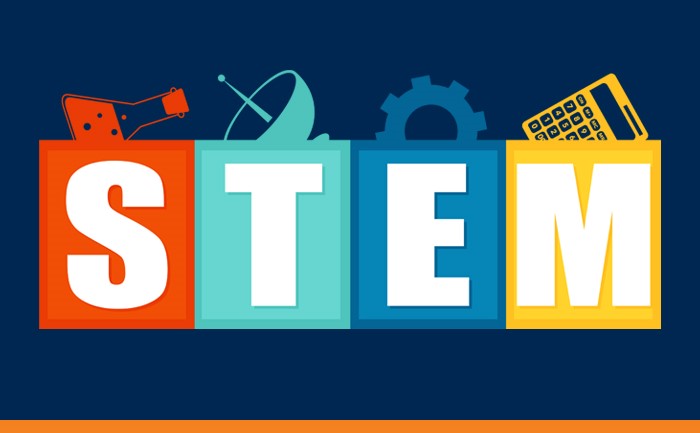
Science, technology, engineering and math (STEM) skills are in high demand as these fields shape innovations in nearly every sector. This has ignited a major push to expand STEM education. Schools, colleges, governments, and employers are taking steps to cultivate greater STEM competencies and opportunities from an early age.
Increasing STEM Offerings
Many elementary and middle schools are now integrating more science and technology lessons into curriculums. Coding, robotics, design thinking, and makerspaces foster interest in applied STEM learning. High schools are adding advanced courses in computer science, engineering, biotech, health sciences, and green technologies.
According to the National Science Teachers Association, over “90% of high schools have increased STEM coursework and activities in recent years.” This exposure motivates students to pursue STEM careers. It also builds adaptive abilities to integrate STEM into whatever path they choose.
Engaging Girls & Minorities
Because women and minorities are underrepresented in STEM fields, targeted efforts engage these groups. Programs like Girls Who Code give young women hands-on technology experience. LEGO robotics camps attract both girls and boys. Districts partner with organizations serving people of color to provide STEM mentoring and instruction.
“We start STEM education early and make it fun, creative, and accessible to engage diverse young minds,” said Reshma Saujani, CEO of Girls Who Code. National groups like Black Girls Code are also working to close interest and opportunity gaps.
New Learning Spaces
To facilitate immersive STEM education, schools are building state-of-the-art labs, makerspaces, and tech centers tailored to interactive exploration. For example, the Eagle Academy for Young Men in New York City created an Engineering & Design Lab where students apply physics and technology to devise solutions to real problems submitted by companies.
Hands-on collaborative spaces like these ignite passion for STEM fields. “We must provide spaces where students can design, build, create, fail, and try again,” said former principal David Banks. Public-private partnerships are helping fund specialized STEM facilities.
Industry Partnerships
Partnering with STEM-related companies gives students real-world connections. Professionals visit classrooms to discuss their work and career paths. Students take site visits to experience corporate research labs and facilities firsthand, often getting to try interactive projects.
High school interns are placed at tech firms during summers to contribute and get mentored. Richard Rossi, Principal of Thomas Edison EnergySmart Charter School, explains that “These industry touchpoints inspire students to see themselves as future scientists and innovators.”
Project-Based Learning
Teaching through hands-on, collaborative projects centered on solving meaningful problems develops STEM abilities. When applying knowledge to create solutions, students gain deeper grasp of concepts and enthusiasm.
A physics class may design model roller coasters incorporating kinetic energy principles. A computer science group could devise an app addressing issues in their community. Mitchell Resnick, MIT Media Lab professor, says this kind of project-based learning “fuels STEM skills along with creativity, communication, and teamwork.”
Career & Technical Education
Career and technical education (CTE) integrates academic and technical STEM knowledge with workplace skills. High school pathways in fields like engineering, advanced manufacturing, IT, and health sciences connect to certification and college degrees.
CTE options provide applied STEM learning tied to in-demand occupations. As data from Harvard University shows, “Participating in STEM-focused CTE programs significantly increases students’ likelihood of entering STEM majors and careers.”
Higher Education Alignment
Colleges and universities are strategically aligning programs to STEM workforce needs. Computing fields are expanding to meet surging demand for cybersecurity, data science, machine learning, and artificial intelligence talent. Engineering programs integrate coursework across specialties to build versatility. Biosciences incorporate genomics and medical technology trends.
Schools also partner with companies on incubators and accelerators to translate university research into new innovations. These synergies between academia and industry help fulfill demand for specialized STEM professionals.
Skilled Technical Training
For non-college-bound students, quality STEM education comes through career and technical schools focused on high-tech specialties. Programs concentrated on robotics, aeronautics, green technologies, precision manufacturing, and digital fields impart skills leading directly to good employment.
“Skilled technical education anchored in leading-edge STEM knowledge is crucial to developing the 21st century workforce,” explained Scott Bess, CEO of Amatrol technical training company. Apprenticeships creating paid on-ramps to tech careers are expanding too.
Continuing Education
Adult continuing education provides STEM upskilling opportunities to working professionals as well as those seeking new directions. Colleges offer certificate programs in fields from cybersecurity to data analytics tailored to non-traditional students looking to reskill.
Online microcredentials through digital courses carry less commitment than lengthy degree programs. Kevin Carey, education policy analyst, views these as “an important onramp to emerging STEM fields amid rapid digital change.”
Policy Support
Government education policies aim to advance STEM at all levels. The Every Student Succeeds Act requires states to adopt rigorous math and science standards. States are also creating STEM partnerships, networks, and funding streams to drive innovation regionally.
And federal legislation like the Building Blocks of STEM Act provides funding for hands-on STEM learning in preschool. These supports aim to build STEM education capacity systematically.
Looking Ahead
Giving all students meaningful exposure to science, math, and technology throughout their academic journey is a priority. This develops talents needed for personal success and national prosperity. With diverse, creative strategies, the goal of universal STEM literacy is within reach.









